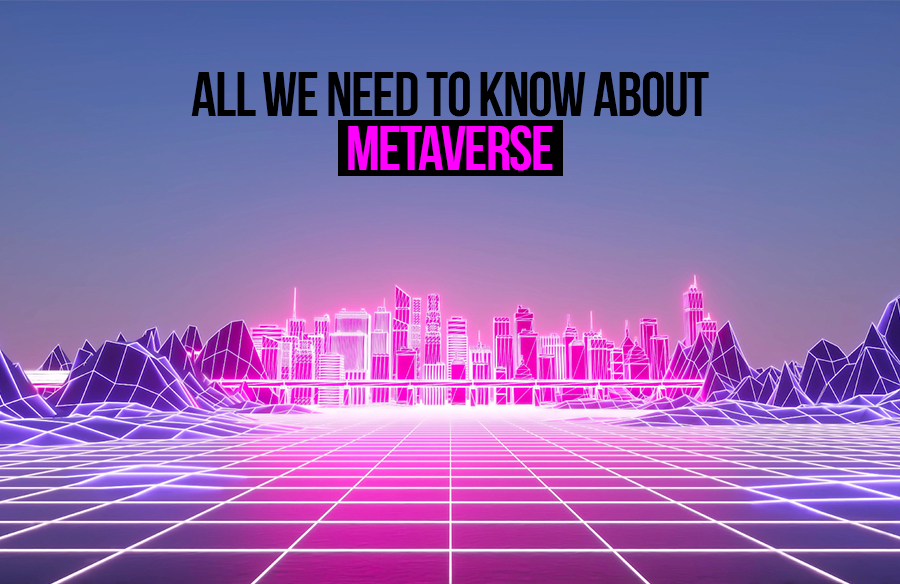
The term “metaverse” didn’t catch on until Facebook changed its name to Meta in October 2021. At the time, the business announced plans to invest $10 billion in technology over the next year to achieve its metaverse goal.
The metaverse is thought to be the next step in the evolution of the internet. Gaming, online communities, and business meetings where people participate via a digital replica or avatar of themselves are just a few examples.
Since Mark Zuckerberg said earlier this year that Facebook’s future would be in the metaverse, everyone in Silicon Valley has been desperately trying to find out what a metaverse is.
But, exactly, what is the metaverse? Who needs to be concerned about it, and why does it matter? If the metaverse is actually “the next chapter for the internet,” as Zuckerberg claims, it’s essential to grasp and define it now so that you’re not caught off guard when (or if) it develops.
What is the Metaverse?
The concept of a metaverse isn’t new. It was first detailed in the novel Snow Crash, published in 1992. Several companies launched online communities based on the concept afterward, the most famous of which was Second Life, which was introduced in 2003.
At its core, the metaverse is an embodied internet; a social sphere where people may meet using customized avatars that make them feel more present than a simple video conference. It’s synchronous, so it feels more authentic than today’s feed-based social networking. You’ll meet with them in real-time rather than catching up on what they’ve been up to.

It will also persist, just like the rest of the world. You won’t have to start over when you return to a metaverse location. And, just like in real life, it will have a variety of activities that you would wish to do with other people, such as attending concerts and other events, playing games, hanging out, dating, and, yes, working and shopping.
To be clear, the metaverse does not exist – at least not now. What we do have, though, are some predecessors:
- Virtual Reality: Understandably, VR and the metaverse are frequently confused. When compared to an avatar controlled with a keyboard or gamepad, having an embodied presence feels a lot more real when you wear a headset. While virtual reality, augmented reality, and other forms of spatial computing will be part of the metaverse, it’s also important that it works across many device categories.
- Fortnite and Roblox: Both games have been hailed as forerunners of the metaverse, and they indeed tick a few boxes: Both Fortnite and Roblox are social spheres with avatars and in-world economies, and massive live events have shown that they’re more than just games. Both titles, on the other hand, are stand-alone properties.

Finally, there’s one major reason why we don’t yet have a metaverse:
Metaverse is a network. It is a collection of services that are loosely linked together, both by companies establishing dedicated roads linking their services and by consumers beating their paths to travel from one location to another. That’s also why some of the first avatar-based services, such as Second Life, aren’t the metaverse in themselves. Just as the mobile internet isn’t just one app and none of your phone’s apps would have succeeded if it weren’t for the existence of several other apps and services, the metaverse relies on the many interconnected services to survive.
Why does the Metaverse matter?
Believe it or not, the rush to the metaverse did not begin with Zuckerberg’s interest in virtual reality. Rather, it is influenced by a variety of things. Hundreds of millions of people are using avatar-based social gaming platforms; the pandemic has compelled us all to seek out new types of real-time interaction; and companies like Apple, Amazon, Google, and Meta are all attempting to figure out what will be the next big thing after the smartphone. And, while these patterns are unfolding in real-time, a few key questions remain unanswered.
- What will the new gatekeepers be like? The companies that create the future’s AR and VR headsets are in a strong position to profit from the metaverse and impose laws on it. As Zuckerberg has confessed, one of the reasons Meta is so interested in the metaverse is that the company lost out on mobile hardware and is now forced to play by the rules of Google and Apple’s app stores.
- What about personal privacy, security, and mental health? Facebook, YouTube, and other social media platforms have been widely criticized for their handling of incorrect facts and privacy concerns, as well as the impact they have on their users’ mental health. All of these problems do not go away in the metaverse, but they will most likely be resolved in a totally different way. Hiring tens of thousands of moderators to prevent hatred and abuse in real-time environments may not be the best approach, and geographical data obtained by headsets surveying people’s living rooms create plenty of new privacy concerns.
- Who will pay for it, and how will they do so? Advertising supports a large portion of today’s consumer internet, with a nice froth of subscription income on top. Some of the same models might be applicable in the metaverse. A return to transactional business structures, maybe driven by decentralized finance, is also possible.